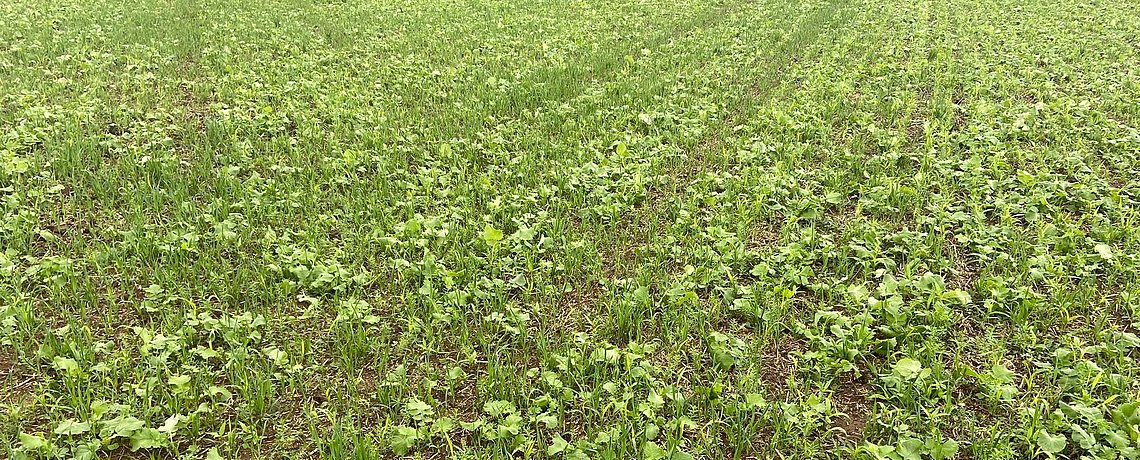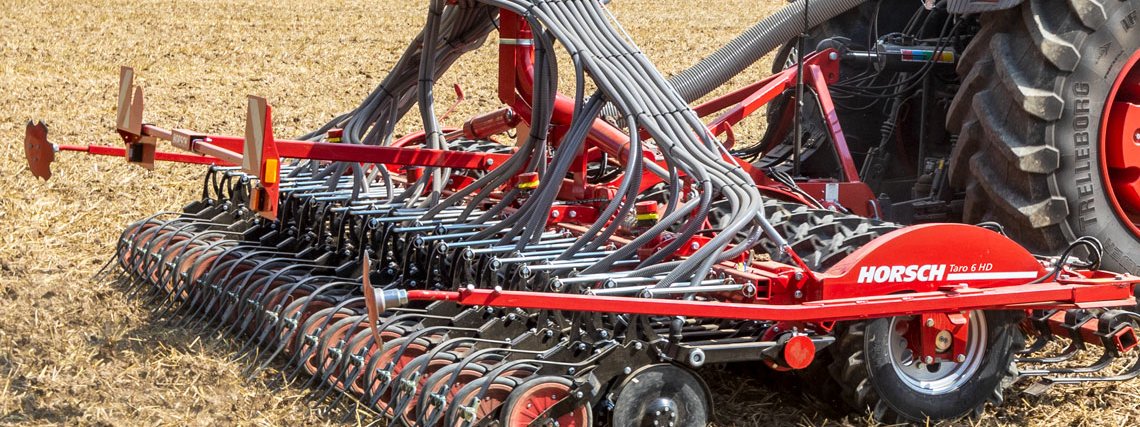It is never too late for catch crops?!
Catch crops - why grow them?
In view of increasing severe weather events, problems with groundwater contamination, resistances and the currently rising fertiliser prices, growing catch crops is becoming more and more important. Goals such as improving the soil structure or building up nutritious humus are also promoted through growing catch crops.
In addition, there are the following arguments:
1. Reduction of erosion
2. Improvement of deep rooting capacity
3. Nutrient supply for soil organisms
4. Breaking up nutrients
5. Increasing biodiversity
6. Suppression of volunteer crops and weeds
7. Preventing evaporation and water losses
8. Supply and storage of nitrogen
9. Preventing leaching
10. Targeted release of nutrients to the following crop
11. Control and suppression of nematodes and diseases
12. Creating shelter for wildlife
...
So, there are many reasons that argue for growing catch crops, and in some cases even call for it.
Growing catch crops - When is the right time?
In general, the optimal time for sowing depends on several factors. For example, the type of catch crop. Depending on the type and development behavior, the optimal time for sowing must be observed. Legumes, for example, should be sown in good time due to their thermophilic properties and slower juvenile development to achieve the required soil coverage and to be able to fully exploit their positive effects.
In principle, when sowing early, a rapid increase in leaf mass and thus a rapid soil coverage is expected, which in turn ensures a reliable and early weed suppression. In addition, more biomass is formed in comparison to sowing late, which means that potentially more nitrogen can be fixed.
The main argument in favour of early sowing is the higher number of available and suitable species. The choice of plants that are suitable for later sowing is limited.
Even with some species that are tolerant to sow late, there is a risk that the crop will die out early due to early frosts and therefore no longer contribute to soil coverage and the effect of catch crops. Therefore, frost tolerance of the species also plays a crucial role.
| Species | Sowing time | Frost tolerances |
| Mustard | Until mid-September | Medium |
| Oilseed radish | Until beginning of September | Very High |
| Lupine/summer vetch | Until mid-August | Medium |
| Phacelia | Until beginning of September | High |
| Buckwheat | Until beginning of September | None |
| Niger seed | Until mid-August | None |
| Persian clover | Until beginning of August | Low |
| Berseem clover | Until mid-August | High |
| Sunflower | Until mid-August | Low |
Early isn't always better:
The strongest growth of above-ground leaf mass takes place until flowering. After flowering, the growth decreases strongly and the leaf mass can be reduced. In this case, there is a danger of a lack of soil coverage and insufficient nutrient uptake in autumn.
If we look into the soil and evaluate the root growth, there is also no more growth of the root system after flowering. This means that from the point of view of root growth, early sowing is not necessary.
Another disadvantage of sowing early:
Especially in the case of catch crops with rapid development, there is a risk that their seeds will fall down. In this way, the catch crop becomes a weed in the following main crop. Successful control of it is often difficult.
There are arguments why farmers should think about sowing later. Especially in dry years like this one.

Sowing later can be advantageous:
In case of severe drought, early sowing in August does not ensure reliable germination. With regard to germination, the often wetter autumn is an argument for sowing later.
When sowing takes place later, more time and care can be given to soil cultivation. In this case the fields can be cultivated suitably for the catch crop and the following summer crops.
The possibility of carrying out several mechanical tillage passes means that volunteer crops can also be controlled more intensively. In particular, farms practising mulch seeding or conservation soil cultivation can thus mechanically combat two to three waves of volunteer cereals. Phytosanitary problems are better controlled and the risk of volunteer crops established in the catch crop serving as a green bridge for aphids, for example, is minimised.
The point that late-sown catch crops have less growth height and thus the water consumption dependent on this is lower should also be taken into account. Although a complete soil coverage with biomass serves to prevent evaporation, water consumption also increases with increasing plant height. Therefore, especially on dry locations with insufficient water and low precipitation expectation in winter, sowing should not be done too early. As a general rule, hardy species have a higher water consumption than freezing species.
Conclusion about the sowing time:
It may still be useful to consider the topic of catch crop sowing at the beginning of September. This is provided that the sowing conditions of the species are taken into account.
Not every type of catch crop is suitable for sowing late. Only late-seed compatible or winter-hardy catch crops are available. It must also be taken into account that some freezing catch crop species have a low sensitivity to lower temperatures during juvenile development, which means that safe freezing in winter cannot be guaranteed. In this case, the strategy for tilling the catch crop in spring must be adapted accordingly.
